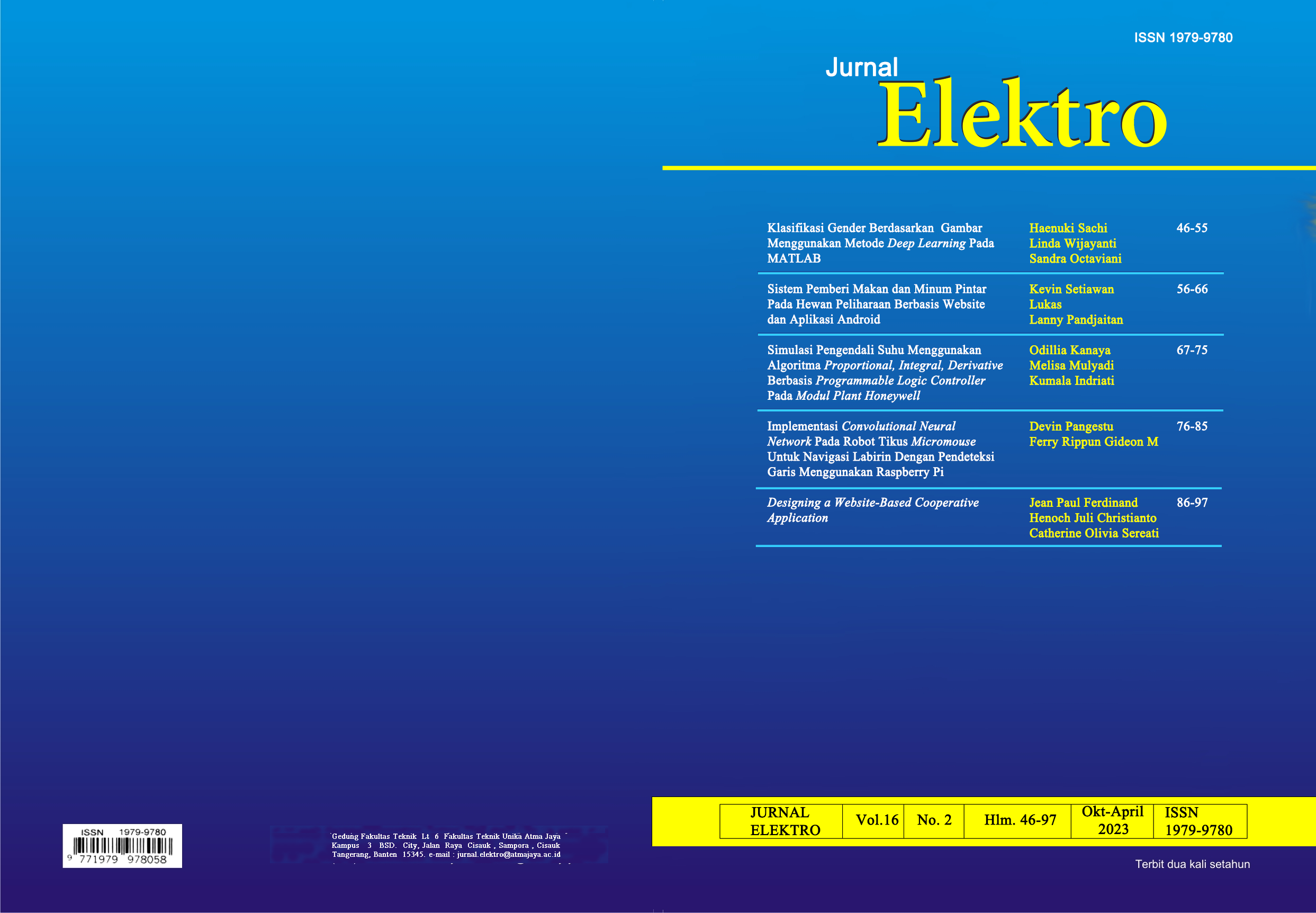Klasifikasi Gender Berdasarkan Gambar Menggunakan Metode Deep Learning Pada MATLAB
DOI:
https://doi.org/10.25170/jurnalelektro.v16i2.5135Keywords:
Training Algorithm Options, Deep Learning Toolbox, Convolutional Neural NetworkAbstract
In the present era, machine intelligence, also known as Artificial Intelligence (AI), is demanded not only to execute specific commands but also to recognize, analyze, or even make decisions, thereby providing desired outputs. By harnessing the power of AI, it is anticipated that desired outcomes will be more accurate and goal achievement will be optimized, minimizing losses. With the capabilities of AI in mind, a research study has been conducted on AI's ability to analyze and make decisions based on specific data. In this study, data in the form of images of men and women were utilized. The objective of this research is to analyze the ability of AI, particularly in gender classification. The method employed in designing this system is Deep Learning, with GoogLeNet as the Convolutional Neural Network utilized. In testing, the data accuracy ranged from 61.8% to 100% for the system without training algorithm options and from 97.5% to 100% for the system with training algorithm options. Testing was also carried out on a smaller set of training data and grayscale images, yielding lower accuracy ranges. From this research, it can be concluded that the quantity of training data, image preprocessing, and training algorithm options are crucial indicators for enhancing prediction accuracy.
References
A. Santoso and G. Ariyanto, "Implementasi Deep Learning Berbasis Keras untuk Pengenalan Wajah," Emitor: Jurnal Teknik Elektro, vol. 18, no. 1, pp. 15-21, 2018.
A. Kaplan and . M. Haenlein, "Siri, Siri, in my hand: Who’s the fairest in the land? On the interpretations, illustrations, and implications of artificial intelligence," Business Horizons, vol. 62, no. 1, pp. 15-25 , 2019.
R. Yogaswara, "Artificial Intelligence Sebagai Penggerak Industri 4.0 Dan Tantangannya Bagi Sektor Pemerintah Dan Swasta," Masyarakat Telematika Dan Informasi : Jurnal Penelitian Teknologi Informasi Dan Komunikasi, vol. 10, no. 1, p. 68, 2019.
A. e. a. Peryanto, "Rancang Bangun Klasifikasi Citra Dengan Teknologi Deep Learning Berbasis Metode Convolutional Neural Network," Jurnal Ilmiah Teknik Informatika, vol. 8, no. 2, p. 138, 2020.
A. Sadli, "Simulasi Pengenalan Karakter Menggunakan Neural Network pada Matlab," Jurnal Sistem Informasi dan Teknologi Informasi, vol. 7, no. 1, pp. 89-97, 2018.
C. Szegedy, W. Liu, Y. Jia, P. Sermanet, S. Reed, D. Anguelov, D. Erhan, V. Vanhoucke and A. Rabinovich, "Going Deeper with Convolutions," IEEE Conference on Computer Vision and Pattern Recognition (CVPR), 2015.
N. Sagala and H. Tampubolon, "Komparasi Kinerja Algoritma Data Mining Pada Dataset Konsumsi Alkohol Siswa," Khazanah Informatika: Jurnal Ilmu Komputer Dan Informatika, vol. 4, no. 2, p. 98, 2018.



